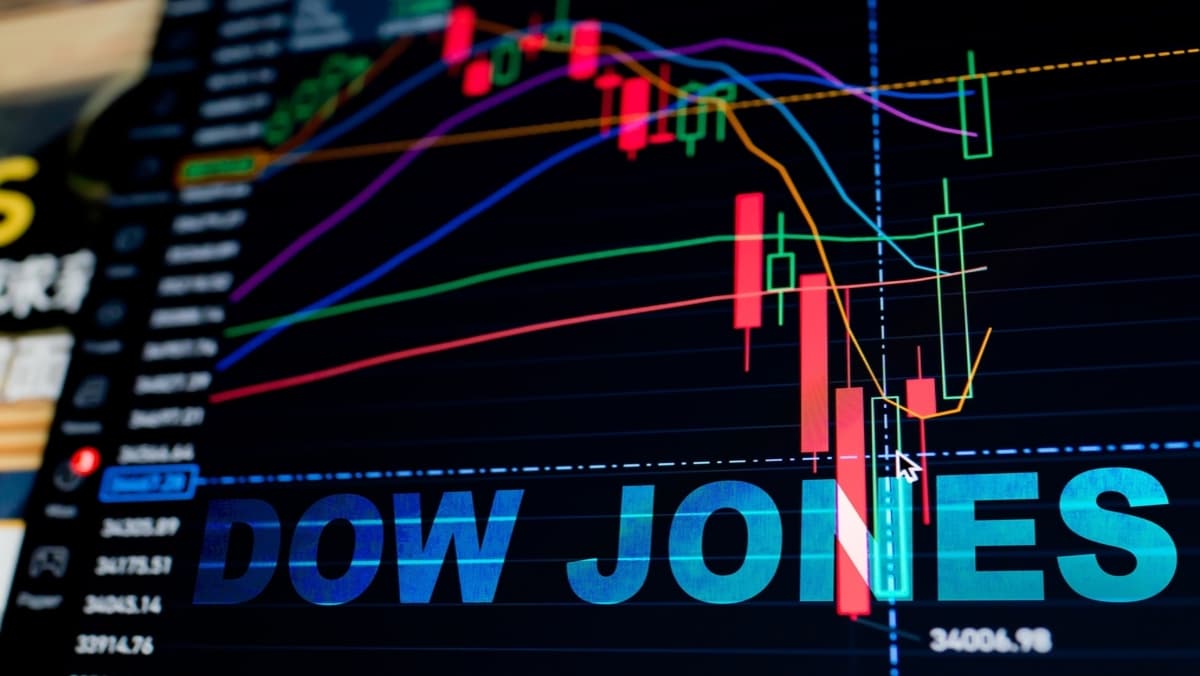Dow Jones Faces Short-Term Pressure: Divergent Earnings Season, Cautious Monetary Policy, and Unclear Trade Expectations


The Dow Jones Industrial Average (US30) has just recorded its third consecutive losing session, clearly reflecting mounting pressure on the U.S. equity market from multiple fronts. As liquidity becomes more cautious following the Federal Reserve’s decision to hold interest rates steady, investor sentiment continues to be weighed down by inconsistent signals from the Q2 earnings season, particularly among high-weight constituents. The combination of mixed fundamentals and a cautious policy stance is creating a visible tug-of-war zone for the Dow Jones in the short term.
The Q2 earnings season paints a clearly divergent picture across Dow components. While Apple surpassed expectations with impressive revenue and net profit, stocks like Dow Inc. and UnitedHealth have significantly disappointed. Dow Inc. posted a net loss of over $800 million and was forced to cut its dividend by half to preserve cash flow. Meanwhile, UnitedHealth — a pillar in the health insurance sector — reported a 40% year-over-year decline in EPS, mainly due to surging medical costs. These earnings shocks have undermined the index’s support this week.
Although Apple offered a relative bright spot, the overall earnings season has not provided enough momentum for the Dow to break out of its current consolidation range or reclaim its historical highs. Particularly in a high interest rate environment and with limited speculative capital, the market lacks a clear catalyst — one that has yet to materialize.
At the recent FOMC meeting, the Federal Reserve decided to maintain the federal funds rate at 4.50%, marking the fifth consecutive pause in 2025. Despite internal divisions — with two members favoring a rate cut — Chair Jerome Powell emphasized the Fed’s commitment to preserving policy independence, especially in light of political pressure from President Trump, who is advocating for rapid monetary easing.
The Fed acknowledged signs of slowing U.S. economic growth in the first half of the year, although the labor market remains resilient with low unemployment, and inflation is described as “somewhat elevated” but still under control. Q2 GDP beat expectations with a 3.0% gain, yet output price pressures have moderated, with the GDP Price Index easing to 2.0% — a key reason for the Fed’s continued “wait-and-see” stance.
The Fed’s message is clear: it is not prepared to pivot policy without compelling evidence of sustained disinflation. This implies that the current high-rate environment will continue to exert downward pressure on risk assets like equities. The Dow — which is heavily influenced by cyclical stocks — is now adjusting to these revised market expectations.
One notable support factor for the market this week has come from the trade front. The newly announced U.S.–South Korea trade agreement, following earlier progress with Japan and the EU, signals a concerted effort by the U.S. administration to reestablish strategic trade alliances amid intensifying global geopolitical competition.
However, the real market focus remains on U.S.–China relations. The two largest economies are currently entering a third round of negotiations to decide whether to extend their 90-day tariff truce. These developments are being closely watched, as any positive signal from Beijing could boost global investor confidence, especially in industrials and commodities — sectors heavily represented in the Dow.
Another critical factor ahead is the upcoming U.S. Non-Farm Payrolls (NFP) report and the unemployment rate, both scheduled for release later this week. These will be key pieces of the puzzle in shaping monetary policy direction and financial market responses. If job growth continues without igniting inflation fears, it could serve as a “soft catalyst” to help stabilize the Dow following its three-day pullback.
Conversely, if unemployment worsens or the NFP figure surges too far above expectations — implying that the Fed will maintain its tightening stance — the Dow could face further short-term downside pressure.
Given the current landscape, the Dow Jones appears to be undergoing a technically justified correction, following a prolonged rally toward historical highs. The combination of divergent earnings, a high-rate environment, cautious Fed signals, and unresolved trade negotiations is depriving the index of a clear breakout trigger.
Nonetheless, should supporting factors — including strong labor data, tangible progress in U.S.–China trade talks, and the absence of unexpected geopolitical shocks — emerge in tandem, they could form a solid foundation for the Dow to regain bullish momentum in the weeks ahead.
The post Dow Jones Faces Short-Term Pressure: Divergent Earnings Season, Cautious Monetary Policy, and Unclear Trade Expectations appeared first on European Business & Finance Magazine.















































